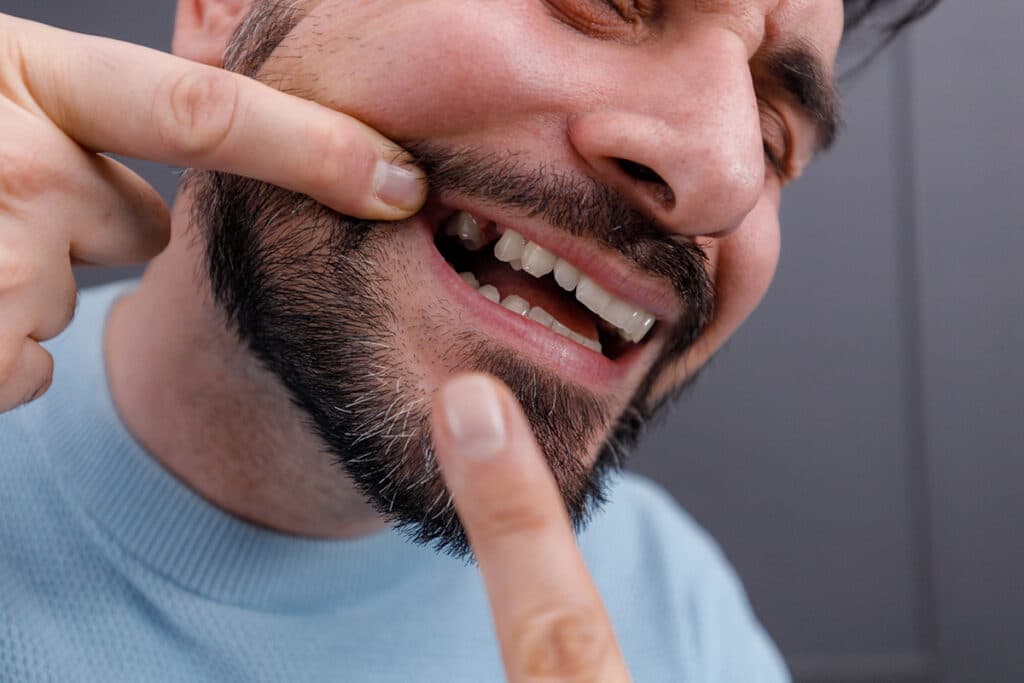What Happens If You Don’t Replace a Missing Tooth with a Bridge?

When you lose a tooth, whether due to injury, decay, or extraction, it might be tempting to leave the gap as it is. Especially if the missing tooth is in a less visible area of your mouth, you might think it's not a significant issue. However, from a dental health perspective, ignoring a missing tooth can lead to a cascade of problems that affect not only your oral health but also your overall well-being. The space left behind isn't just an empty spot; it's a disruption to the complex, interconnected system that is your mouth. Your teeth work together to support one another, maintaining proper alignment and function.
Losing even one tooth can set off a chain reaction. The adjacent teeth lose the support they once had and can start to drift into the space. This shifting can throw your bite out of alignment, creating issues with how your upper and lower teeth meet.
Over time, this misalignment can lead to problems like excessive wear on other teeth, difficulty chewing, and even strain on your jaw joints. Addressing the gap promptly with a solution like dental bridges is not just about aesthetics; it's a crucial step in preserving the long-term health and stability of your entire mouth.
The Domino Effect of a Missing Tooth on Alignment
The most immediate and predictable consequence of not replacing a missing tooth is the shifting of surrounding teeth. Think of your teeth as a tightly packed row of books on a shelf. If you remove one book, the ones on either side will start to lean and tip into the space. In the same way, when a tooth is gone, the neighboring teeth lose their structural support and begin to drift.
This movement isn't limited to the teeth directly next to the gap. The tooth in the opposing jaw, which used to make contact with the missing tooth, can also begin to over-erupt or "super-erupt," meaning it grows longer as it seeks a surface to bite against.
This gradual but steady movement creates a domino effect throughout your mouth. As teeth shift, your bite—the way your upper and lower teeth come together—is altered. This condition is known as malocclusion. An improper bite can lead to a host of complications.
Chewing food properly may be challenging. This issue can impact your digestion and overall nutritional health. Furthermore, the uneven forces placed on the remaining teeth can cause them to wear down prematurely, chip, or even crack. This shifting also creates new, hard-to-clean spaces between your teeth, increasing your risk for plaque buildup, tooth decay, and gum disease.
Bone Loss and Changes to Facial Structure
One of the most serious but least visible consequences of a missing tooth is the loss of jawbone. Your jawbone requires constant stimulation from your teeth to maintain its density and volume. The roots of your teeth transmit the forces of chewing into the bone, signaling to the body that this part of the jaw is in use and needs to be maintained.
When a tooth is lost, that stimulation disappears. Without it, the section of the jawbone that once supported the tooth begins to deteriorate in a process called resorption. You could lose as much as 25% of the bone width in the first year after a tooth is lost, and the loss continues over time.
This bone loss doesn't just affect your oral health; it can have a noticeable impact on your facial appearance. As the jawbone shrinks, it can cause the lower part of your face to appear shorter, resulting in a more aged appearance. Your lips can lose support, appearing thinner, and your cheeks may appear sunken. This issue can lead to the development of premature wrinkles around the mouth. The structural changes caused by bone resorption can complicate future tooth replacement options, such as dental implants, and may require bone grafting procedures to rebuild the lost bone. Replacing a missing tooth with a bridge helps maintain the position of your other teeth, which in turn helps distribute chewing forces and supports the underlying bone structure.
Increased Risk of Gum Disease and Further Tooth Loss
A gap in your smile does more than just affect alignment and bone; it creates a new and challenging environment for your oral hygiene. The space left by a missing tooth can become a trap for food particles and bacteria. Similarly, as adjacent teeth tilt and shift, new, awkward angles and spaces are created that are difficult to reach with a toothbrush and floss. This problem allows harmful plaque to accumulate, increasing the risk of gingivitis, the earliest stage of gum disease. If left untreated, gingivitis can progress to periodontitis, a more severe infection that damages the soft tissue and destroys the bone that supports your teeth.
This progression can create a vicious cycle. Advanced gum disease is a leading cause of tooth loss in adults. The same bone resorption and gum infection that can develop around the site of a missing tooth can also begin to affect the neighboring teeth. As the supporting structures of these teeth weaken, they can become loose and may eventually be lost as well. Therefore, what started as a single missing tooth can escalate, leading to the loss of multiple teeth. By filling the gap with a dental bridge, you restore a smooth, continuous surface that is easier to clean and helps protect the surrounding teeth and gums from disease.
Restoring Your Smile and Function
Deciding to replace a missing tooth is a proactive step toward protecting your long-term oral health. It prevents the cascade of adverse effects that can follow tooth loss, including shifting teeth and bite problems, bone resorption, and an increased risk of gum disease. A dental bridge provides a stable, fixed solution that restores both the function and appearance of your smile. By anchoring to the teeth on either side of the gap, a bridge literally "bridges" the space with a natural-looking prosthetic tooth, allowing you to chew, speak, and smile with renewed confidence. We believe that a healthy smile is a foundation for overall wellness, and addressing a missing tooth promptly is a critical part of maintaining that foundation for years to come.
Frequently Asked Questions About Dental Bridges
Is getting a dental bridge a painful procedure?
We prioritize patient comfort throughout any procedure. The process of getting a dental bridge typically involves two visits. During the first visit, we prepare your adjacent teeth under local anesthesia, so you should not feel any discomfort. You may experience some mild sensitivity afterward, but this issue is usually temporary and manageable with over-the-counter pain relievers. The second visit, where we fit your permanent bridge, is generally a quick and comfortable process.
How do I care for a dental bridge?
Caring for a dental bridge is similar to caring for your natural teeth, with one crucial addition. You will still need to brush twice a day and floss daily. However, it is critical to clean the area underneath the pontic (the artificial tooth). To do this, you can use a floss threader or a special type of floss designed to slide under bridges. Maintaining excellent oral hygiene will help prevent decay in the supporting teeth and ensure your bridge lasts for many years to come.
At Davis Gribble Hollowwa Dental, we are dedicated to providing comprehensive and compassionate dental care to the Albuquerque community. Our experienced team utilizes modern technology to restore and maintain the health and beauty of your smile. To learn more about our restorative dental services or to schedule a consultation, please don’t hesitate to contact us.

